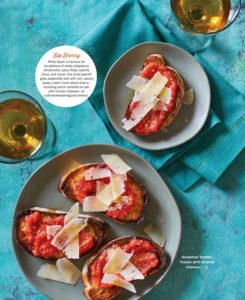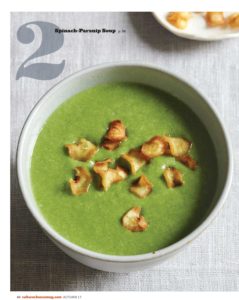



The Cheese is moving
Outsmarting the social media giants
By Stephanie Skinner
Here at culture: the word on cheese, we’re in the content business — specifically, cheese content. We produce articles and photographs, interviews and contests, videos and events that thrill the dedicated cheese enthusiast and entice the uninitiated. We know how to do this, and we love what we do. What we don’t do is print, code, or tech innovate. To distribute and promote our content, we rely on the manufacturing facilities and digital technology platforms others have built. And like most of my friends in the publishing world, we have increasingly used social media as a way to push our content out to the world.
I think these friends would agree, this seems like a match made in heaven. Social media platforms are ideal vehicles for our type of content — splashy food photos, tantalizing teasers, even the occasional baby goat snapshot. Then there’s the access to an aggregated audience. Facebook alone has 2.19 billion monthly active users. A lot of them love cheese — and they’re hanging around the platform just waiting for delicious content likes ours to come along (I’m sure of it). Finally, there’s engagement. It’s hard to come by when you’re a print publisher. But on social media, readers will tell you what they think of your content; they’ll contribute input and ideas; and they’ll even share your content with their own networks. Sounds too good to be true, right? If you ask me, a relatively small niche publisher with a staff of 10 and a modest annual marketing budget, I’ll tell you that it is.
Here’s the thing: The social media companies don’t treat us very well. And they should because publishers provide the backbone of substantive and monetizable content on their platforms. Without professional content producers, social media consists of people posting photos and memes for their friends and family. There’s no money in that for anyone.
The way these platforms operate, they make it easy for publishers to contribute our content, but extremely hard for us to profit from it. Over the eight years we’ve been doing social media, it has come to feel like an unevenly weighted proposition. As evidenced by their valuations, social media is benefiting mightily from publisher content. The question is, are we?
The Handwriting on the Wall
Like most publishers, we have been putting more personnel and marketing resources behind our social media strategy every year. We now employ a full-time social media manager who oversees two part-time social media interns. Our editor-in-chief devotes time to collaborating on our social media editorial plan, which includes current and archival content from our magazine as well as from-scratch, social media-only content. Everyone pitches in on “engagement,” replying to user comments and questions. And as a team, we review our social analytics just like we review our other business results.
Our efforts have paid off. We have created a digital audience. Today, we have over 100,000 Facebook followers, over 16,000 followers on Twitter, about the same on Instagram, and 137,000 monthly viewers on Pinterest. We’re clearly reaching people we aren’t touching with our print magazine, which mails to 19,000 subscribers in addition to broad newsstand delivery and sales via cheese shops nationwide.
We’re thrilled to have created this audience, and we see the digital circulation of our content as creating a positive boost to our brand awareness. However, is “reach” the endgame for publishers on social media? Given the total value of the resources we’re committing to it, we need to find ways to translate this reach into cold, hard cash. Using Facebook as an example, here are the ways we have tried to realize a return on our investment in this platform and the barriers we’ve faced along the way.
Change Happens
When Facebook launched “business Pages” in 2007, anyone could create a page for their company or organization, start collecting followers, and post unlimited messages to their page. By and large, the brand’s followers would see these posts show up in their own individual News Feeds.
This “organic reach” (the number of people you can reach for free on the platform by posting to your page) has since steadily declined. By 2012, only an average of 16 percent of a brand’s followers were seeing that brand’s posts in their feeds. By 2014, this dropped to 6.5 percent. Research from social media consultancy Social@Ogilvy found that for pages with more than 500,000 likes, organic reach is as low as 2 percent.
Early on, Facebook cited volume as the reason for this decline. The platform claimed it was simply managing more and more “ad content,” causing appearance in News Feeds to become more competitive among marketers.
However, the social media giant has proceeded to make multiple changes to its platform to further inhibit organic reach. In 2016, it changed its News Feed algorithm to prioritize content from friends and family over that of brand pages. In 2018, it doubled-down on this with a similar update. According to Facebook’s Head of News Feed Adam Mosseri, in January 2018 Facebook began to “shift ranking to make News Feed more about connecting with people and less about consuming media in isolation.”
If you haven’t looked at your own organic reach lately, it’s a good idea (and I suggest doing so in a padded room). When logged in as an administrator, go to any one of your posts and see the number of “people reached,” which appears just above the like, comment, and share options. For any one post, we average about 10,000 in reach across our 100,000+ Facebook followers. Once on November 27, 2016, we hit the jackpot and reached over 54,000 users. But, because of the opaque nature of these algorithms, we have no idea why.
We do know that engagement gooses up organic reach. The higher the quantity of shares, comments, and likes on your posts, the higher the chances these posts will appear subsequently in other followers’ feeds. By the same token, Facebook essentially penalizes you if your posts don’t attract engagement right off the bat. No engagement, no circulation. And so publishers are compelled to focus on strategies (sometimes stooping to brand-killing clickbait tactics) to attract engagement if the effort they’re putting into posting is to have any chance of paying off.
So we’ve gathered this audience, but we can’t get our content to them — unless we pour more money into the proposition. Facebook claims that their algorithm changes are intended to ensure users see content that is most relevant to them. The skeptics among us (count me in) suspect that Facebook has a different motive: To get brands to spend more on ads and “promoted” content.
Anticipate Change & Adapt
According to Facebook, brands should assume that their organic reach will eventually drop to zero. So if you really want to reach your target audience on Facebook, you’ll need to supplement (and eventually replace) your organic efforts with paid ones.
We make this investment because we believe reach is essential if we’re going to make any traction using this platform. To start, we “boost” some of our posts. We pay Facebook $20-$50 to promote an individual post to friends of our page, or friends of friends of our page (we choose). In our case, this usually yields a 10- to 15-percent lift in reach. It would cost far more to reach even close to 100 percent of just our own followers.
We also started investing in general advertising on Facebook (and Pinterest). If you “liked” various food pages around 2013, you might have seen our “Like Cheese? You’ll love culture!” ads, which linked users to our Facebook page. We “promoted our page” by paying Facebook to serve this ad to people who had shown an interest in cheese or related food and beverage categories. We did this for about two years, paying $5-$10 per day and then more (up to $50 per day) once we became proficient at targeting.
These efforts paid off. Over the two years, we went from about 12,000 organic followers on Facebook to over 150,000. It cost us more than $30,000 plus time spent posting, studying analytics, and adjusting campaigns.
Then we had our eureka moment.
If reaping the benefits of Facebook is going to cost us not only in man-hours (which aren’t free, btw) but in dollars, then we need a tangible way to fund this effort — if not also profit from it. Where do publishers look for money? Their advertisers, of course. In 2016, we decided to get into the ad game — selling our advertisers access to the significant audience we had created on Facebook.
We started with digital giveaways. For $500, an advertiser offers a free package of cheese-related goodies to our audience. We collect the names and randomly pick a winner. The advertiser gets brand display, and we generate excitement among our followers in addition to bringing in some revenue.
Starting this year, we’ve been selling sponsored content opportunities to our advertisers. These are high-quality content items that highlight an advertiser’s products or expertise and show up in our followers’ News Feeds labeled as “sponsored content.” We create and own the content. The advertiser fee covers content creation and then some. We run one sponsored post per week. When we rolled this out in late 2017, we quickly sold all available spots for 2018. We charge $500 for a cheese pairing or recipe and $2,500 for a 15- to 30-second video (by the way, the Facebook algorithm purportedly gives priority to video over all other types of content). The speed with which we sold out sponsored posts for the year tells us we can either charge more or sell more. But there’s a tipping point. Our followers appreciate some sponsored posts; they quite likely will get turned off by too many. We’re following the analytics to keep tabs on this.
We have found that creating partnership opportunities with our advertisers is one of the few ways we can capitalize on this audience that we’ve worked so hard to create. It’s a tight rope walk, but so far it’s been worth the effort.
Be Ready to Change Again
 They say nothing in life is free. Or as writer Robert Heinlein more accurately put it, “Nothing of value is free.” This adage most certainly applies to social media. While publishers may be able to freely post to social media platforms, the return on that investment of time and effort may be negligible if you aren’t thoughtful and intentional. Add the investment of budget dollars, and the stakes go up. Based on our own experience, here are five things I recommend every publisher do to ensure that you’re always approaching social media with eyes wide open.
They say nothing in life is free. Or as writer Robert Heinlein more accurately put it, “Nothing of value is free.” This adage most certainly applies to social media. While publishers may be able to freely post to social media platforms, the return on that investment of time and effort may be negligible if you aren’t thoughtful and intentional. Add the investment of budget dollars, and the stakes go up. Based on our own experience, here are five things I recommend every publisher do to ensure that you’re always approaching social media with eyes wide open.
1. Choose your platforms wisely.
Don’t assume that just because you’re a content producer, your brand should be on every social media platform out there. As evidenced by this example of Facebook, there’s an enormous amount of resource commitment required to optimize any one of them. Focus your efforts where you are most likely to reap benefits. In your assessment of each platform, ask: Is our content the right fit for this platform? (Melty cheese photos on Instagram — boom!) Is our target audience active on the platform? (Marked by consistent engagement.) And, of course, do we have the resources to make a measurable impact there? (How much time does it take to manage Instagram relative to the benefits we reap from it?)
2. Know what you’re getting out of each platform.
The “benefits” of social media can be quite elusive. It’s critical to pin-point what you can achieve on each platform — given its individual nature — so you can optimize your effort and track the results relative to those goals.
Even as organic reach decreases, Facebook still has the largest aggregated audience of all social media platforms. For this reason, we see it as an important tool for building brand awareness. But, increasingly we see it as an opportunity to generate revenue in partnership with our advertisers and as a means to drive traffic to our own website. (Although research shows that Facebook users don’t like to link off-site, the platform is responsible for the majority of redirects to our website after organic search.)
Pinterest is a great place for us to trawl for ideas that appeal to the food-obsessed (our kind of people). We make “boards” that test out areas of interest in which we are experts. When users “pin” our content on their boards, we get a good sense of which topics are generating interest and can use that intel in our editorial planning.
We use Twitter as a vehicle for promoting events, but we don’t try to compete there on content. We leave that to the headline writers and pundits.
Our millennial readers are really into Instagram as a way to communicate with each other, but these posts are ephemeral. In an attempt to get more traction from our posts, we just spent $100 for a year of “Link In Profile,” which gives us a way to link from our Instagram posts to our website. It’s another add-on product that needs care and feeding, but it makes an otherwise dead-end channel significantly more useful.
3. Invest carefully.
We’re continuing to dive further into our niche because trying to compete for non-endemic online advertising is a fool’s game. Approximately 60 percent of all online advertising is going to Google, Facebook, and to a lesser but growing degree, Amazon. If you’ve been wondering where the ad dollars are for online advertising, look no further than these three behemoths. If we want to cash in on some of that, we need to be realistic, creative, and targeted. For culture, this means being very careful about how we spend on these platforms.
4. Pace Yourself.
I understand how exhausting it is to feed the social media beast. We used to post to all of our channels (even Tumblr!) every day, and on the important ones six times per day. That was a grind. But it turns out you can pull back from that kind of fevered pace, and, in fact, should. Too much posting can create a backlash. We had weeks wherein our un-likes (people no longer wanting our feed) were as high as our new likes. Based on our analytics, we trimmed and honed our posting schedule to three or sometimes four times per day on Facebook and Twitter, and less often on Pinterest. We see very few un-likes with this schedule, and our reach and engagement stay fairly steady. We use a simple but indispensable spreadsheet format to organize our social media posting plan. Send me an email, and I’ll be happy to share it with you.
5. Whatever you do, don’t outsource your social media management.
Due to the amount of work involved with properly managing social media, the idea of outsourcing it has been appealing. After all, maybe we’d be better off handing it over to experts. Thankfully, we have resisted the temptation. By doing it ourselves, we have created a credible conversation with our audience. We ARE the cheese experts, the place to go for cheese chatter. And now we know thousands of people who are our readers and advertisers, and we talk to them directly through our social media channels. This is the very definition of community building. To this day, everyone on our team has a hand in responding to posts for one day at a time. If we didn’t do that, consider what we’d miss: the feeling of being a part of something and the immediacy of connections, not to mention the ability to corral snide comments or complaints before they become a problem.
Culture’s story is no doubt emblematic of what all publishers are facing with social media. It’s today’s wild west. These platforms, as independent companies, are free to change and evolve — and to do so with limited transparency. The onus is on us to keep up and, only through our own diligence, understand the tactical subtleties and how they impact our investment of time and money. The risk of too little return is just too high. But when we do this, we have a fighting chance of using these platforms to our advantage.
Stephanie Skinner, a serial entrepreneur and compulsive publisher, co-founded culture: the word on cheese in 2008 with her cheesemonger sister Lassa Skinner and cheese expert Kate Arding. She got her start at Inc. Magazine and has launched multiple magazines. Connect via skinner@pagesthemagazine.com.



